A pregnant belly is every expecting mom’s biggest source of pride and joy. However, it can also be a starting point of concern, especially if you’re a first-time mom.
When should I start showing? Is it too big? Or too small? What shape should it be? Am I carrying too low? Or too high?
Worry not, because we’ve all been there. All of these questions are completely normal. Since your bump is the only window to your baby’s world, it’s natural that you want to find out as much as you can about it.
This is why I’ve got you covered. Here is a guide through the stages of your pregnant belly, as well as a detailed tour through different sizes and shapes of your bump.
Pregnant Belly Stages
Your belly will undergo constant changes during your pregnancy. In fact, sometimes, you’ll notice it’s different each day throughout the 9 months.
First trimester pregnant belly

The moment you find out you’re expecting a new baby, you’ll probably start “feeling pregnant” immediately. Not only that: you’ll also notice some important changes in your body.
However, others won’t notice a thing since most pregnant women’s baby bumps don’t show in the first trimester of pregnancy.
If you see a pregnant belly at 8 weeks, this is still not your baby making an appearance. In fact, you’re probably just bloating and that’s why your belly stretches out.
The most interesting thing about this stage is that there will be days when you’ll notice your baby bump but there will also be ones when everything will look just the way it did before your pregnancy.
This happens to many women who suffer from abdominal distension during the first trimester. Relax: it’s nothing to worry about.
I know that all of these gases and constipation can be uncomfortable but the good news is that it will to go away in the second trimester.
Your old, pre-pregnancy, clothes still fit. However, your jeans, trousers, and skirts might become a little tight because of this bloating.
It’s important to start with skin hydration right away. Even though your bump isn’t visible, your skin will have already started to stretch.
This is the perfect timing to start preventing the appearance of stretch marks.
As the end of your first trimester of pregnancy approaches, you might start noticing some changes in your bump.
However, this time, it is not just bloating, it really is your baby.
Expect to hear a bunch of old wives tales about pregnancy regarding your baby’s gender.
It is impossible to know whether you’re carrying a boy or a girl in the first trimester but if your intuition is telling you something, you might be right.
Second trimester pregnant belly

This is the period when you start to look like a pregnant woman. How exciting is that! There is no longer any need to inform anyone around you that you’re expecting, it all becomes quite obvious.
Your baby is growing and your uterus is expanding. In fact, at this point, your uterus is probably the size of a football. Can you imagine that?
At 4 months, your pregnant belly is visible since the uterus is the size of a cabbage and it is placed directly under your belly button.
When you’re 18 weeks pregnant, your baby weighs as much as a potato. Even though every new mom is different, you’ll probably feel their first movement between the 16th and 21st week.
Over the next few weeks, your little one will double their weight and by the beginning of your third trimester, your baby will weigh around 2 pounds.
Sadly, this is also the time when you can expect some new, uncomfortable, pregnancy side effects. However, they’re all perfectly normal. You’ll forget they ever existed once you get to hold your little ray of sunshine.
First of all, the muscles around your uterus are stretching in order to support its growth.
Therefore, it’s likely for you to feel something similar to ligament pain. But your muscles are not the only thing expanding at this point, the same happens to your skin.
As your bump grows, your skin has to follow its rhythm. So, you’ll probably experience some itchiness on your tummy.
I know you’ll be tempted to scratch but be aware that you’ll cause even more irritation if you do so.
This is just a sign that your skin is in desperate need of moisture. The best thing you can do is to apply some hydration or anti-itching cream. Spoil yourself with a warm bath (make sure it’s not too warm), this will give some instant relief, as well.
Another common occurrence in the second trimester is the appearance of “linea nigra”, which literally means “black line” in Latin.
This is vertical linear hyperpigmentation that extends from your belly button to the pubic bone.
Usually, it starts to show on your tummy in the 23rd week of pregnancy. It is not that wide. It measures about 1 centimeter and, most importantly, it’s completely harmless.
Placenta produces an increased amount of melanocyte-stimulating hormone that is responsible for darker nipples and linea nigra.
Don’t worry: this black line is not here to stay. In fact, it will disappear a few months after you give birth.
However, if you want it to be less pronounced, keep your belly away from the sun as much as possible to avoid this discoloration.
During the 26th week, your belly button will suddenly become an outie. This is another one of the changes that will go back to normal after your tummy flattens.
If you want to know if you’re welcoming a girl or a boy, your doctor can tell you your baby’s gender in the second trimester. If you prefer a surprise, just warn them not to reveal the gender.
This is the time to start buying some maternity clothes since your skinny jeans certainly won’t fit you any longer.
Don’t spend too much money on them because you won’t be wearing them forever.
Third trimester pregnant belly

Your due date is fast approaching and you’re getting bigger and bigger. Congratulations, you and your baby are approaching the finish line!
By the end of your third trimester, your pregnancy bump will start to look like a watermelon. You’re almost there, so hold tight!
I know it feels impossible for your skin to expand even more but this is exactly what’s happening.
At this point, your uterus has moved next to your ribs. The baby is pushing your lungs and bladder, so you’ll be visiting a toilet more often than usual.
The shape of your tummy will probably remain the same as in the second trimester. However, your baby bump will continue to grow in size.
Remember how I told you that your baby weighed around 2 pounds at the end of the second trimester? Well, by the end of the third, it will probably grow to up to 6 or 9 pounds.
Therefore, feeling a sharp pain in your abdomen is nothing to panic about.
Your muscles will continue to expand as they follow the growth of your belly. The top of the uterus is pushing more and more upwards, so heartburn is also common at this stage.
Don’t worry if your little one becomes calmer, especially as your labor approaches.
They will still be kicking you but not as often as before. Bear in mind that the baby is getting bigger in the last month of pregnancy so they don’t have as much space as they did.
Size And Shape Of Your Belly
The size and shape of your belly don’t depend solely on your baby’s weight gain.
On the contrary, things such as your pre-pregnancy muscle tone, bone structure, weight and your height all influence your pregnancy bump.
1. Carrying low
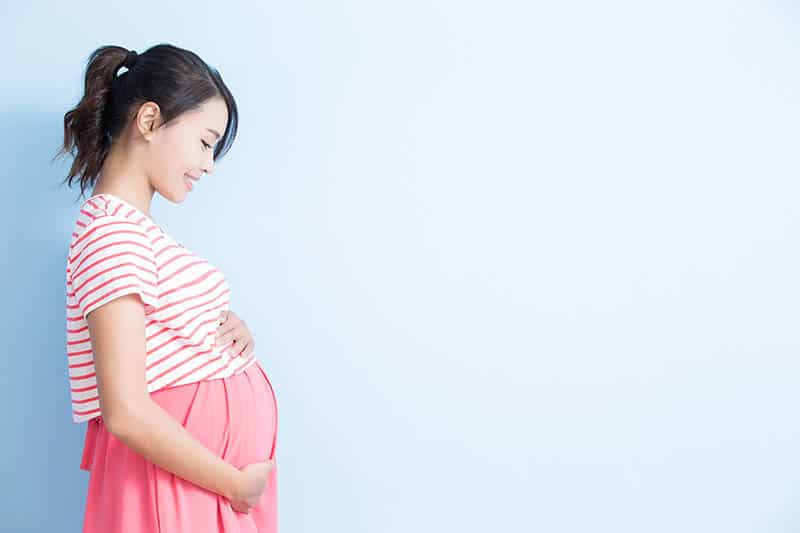
Carrying low can often be quite uneasy. Namely, this position puts a lot of pressure on your lower back.
RELATED: How Much Pressure Can A Pregnant Belly Take? (Causes And Risks)
This is more common for women on their second or third pregnancy. During your first pregnancy, your muscles are strong enough to carry the baby.
However, if this is your second or third pregnancy, the abdominal muscles become more elastic and flexible and therefore can’t hold the growing uterus the way they did before.
Also, some pregnant women start to carry low as their due date approaches. This is a sign that both the baby and your body are preparing for labor.
You should take into account that not all babies do this. Sometimes, your little one doesn’t drop until the very moment of being born.
Basically, carrying low doesn’t impact your baby negatively although it might make pregnancy a little harder on the mother.
On the other hand, if you noticed that the baby dropped too early (but you haven’t been carrying low from the very start), notify your medical health practitioner about these changes.
This can be a sign of premature labor so it’s always better to rule out that possibility in time.
2. Wide pregnant belly
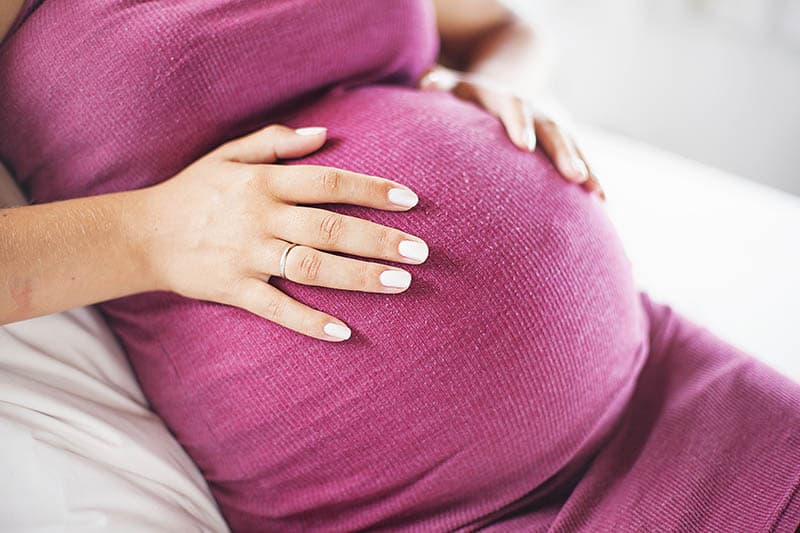
In the case of a wide baby bump, your baby is likely to be positioned in a transverse lie. This means that their head is not up or down.
Instead, the baby’s feet are on one side of your body while the head is on the other.
Once your midwife or a practitioner examines you, they will tell you more about the baby’s position.
But this is not something you should pay a lot of attention to until your final trimester because it’s likely that your little one will change positions in time.
On the other hand, if the baby doesn’t go head down before being born, you might have to undergo a c-section.
3. Carrying high
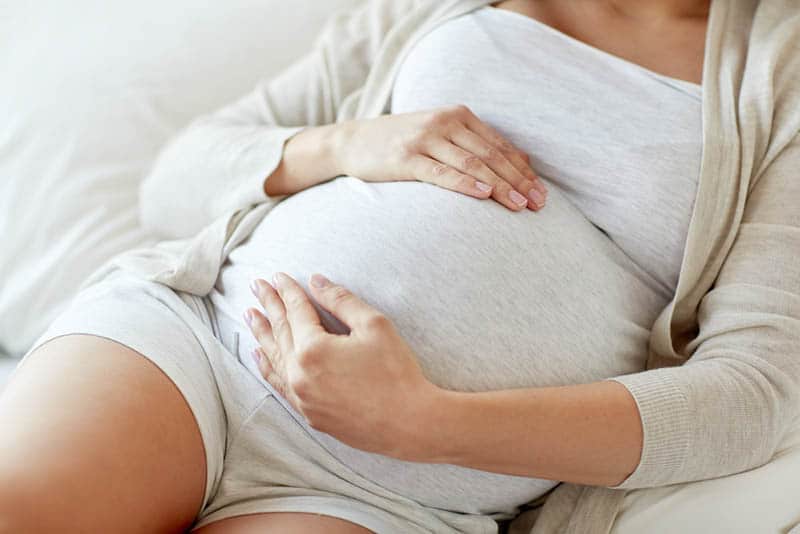
If you have a high baby bump, it means that your abdominal muscles are stronger than usual.
Carrying high is usual for the first and second trimester until your baby’s weight gain increases.
However, a lot of pregnant women have this type of belly until they give birth.
This is mostly the case for first pregnancies. Your abdominal muscles still haven’t stretched completely and they’re strong enough to hold the uterus upfront and up high.
4. Big baby bump
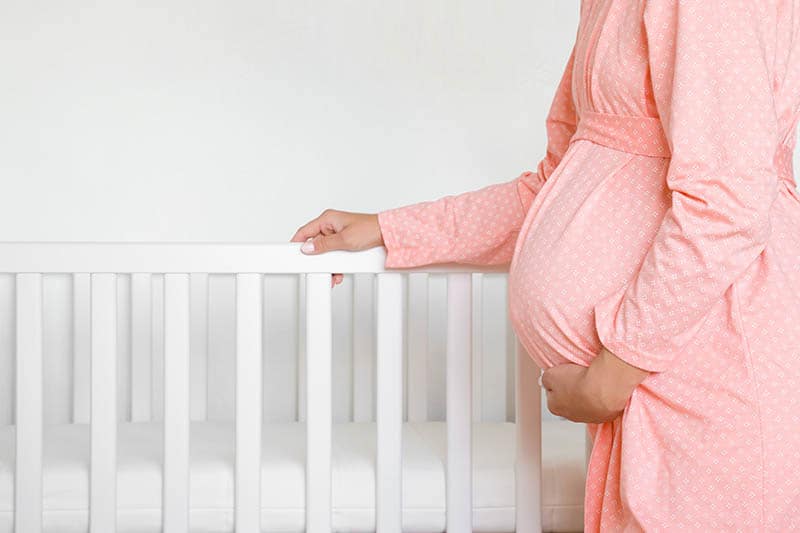
First and foremost, the size of your belly depends on the baby’s position. Sometimes, it only looks like you have a big tummy.
It also depends on your height and weight (including pre-pregnancy weight and your weight-gain). For example, the same bump will always look smaller on a taller woman.
Your obstetrician and midwife will regularly keep check of the baby’s necessary parameters of growth. They will monitor the size of your belly which is measured from the top of the uterus to the pubic bone.
If they tell you that your little one is developing exactly the way they should, the size of your belly shouldn’t concern you.
5. Small baby bump

The same goes for small baby bumps. Once your tummy starts showing, it’s usual for it to grow around 1 centimeter in each week of pregnancy, on average.
Therefore, if your health provider doesn’t see any issue with how small your belly is, neither should you.
You just have to make sure to eat healthily. Don’t be obsessed about gaining weight and remember that strict diets will only harm you and your baby.
The only possible issue with carrying small can be the lack of amniotic fluid. This is a rare condition and something your obstetrician would never fail to notice in time.
To Wrap Up:
If you expect your pregnant belly to completely disappear the moment you give birth- think again.
After all, it grew for nine months so it would be unhealthy and unnatural to go back to the way it used to be overnight.
Yes, you no longer carry a baby. However, your skin and muscles were stretching for a full nine months so you can’t just snap your fingers and reverse this entire process.
Many moms keep a bump in the postpartum period, which is perfectly normal. Please don’t beat yourself up about this.
Don’t ever forget that you brought a new life to this world!
Your belly was home to a little human being and your body has done something marvelous: it kept your baby warm and safe this whole time.
So instead of being self-conscious about your belly, be proud of it, mama!
READ NEXT: Pregnancy Outfits For Winter: 10 Maternity Outfits To Keep You Warm
Like this post? Please share or pin it for later. You can also stay in the loop and follow us on Facebook, Instagram and Pinterest.
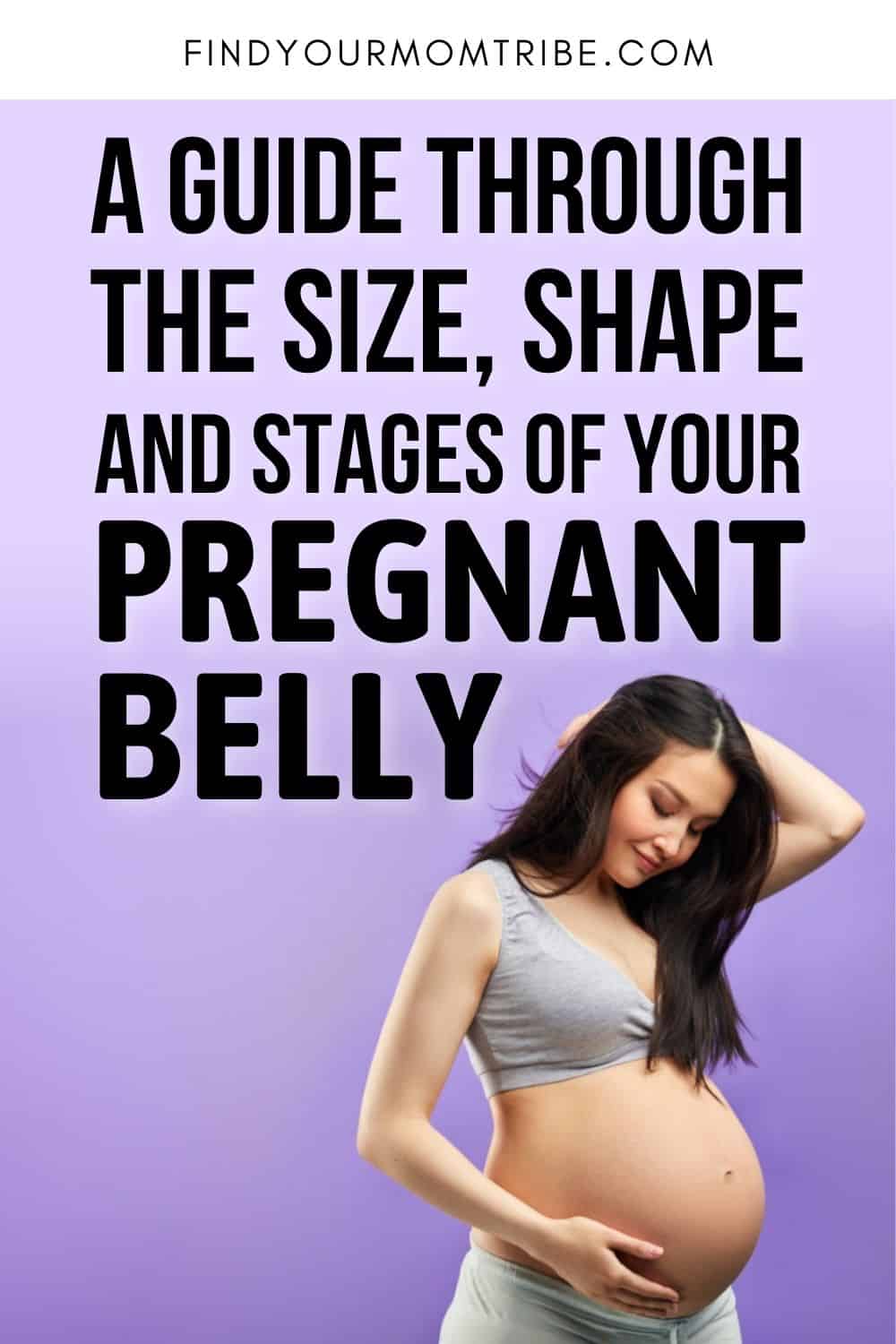
This post contains affiliate links. Please see our full disclosure for more info.

